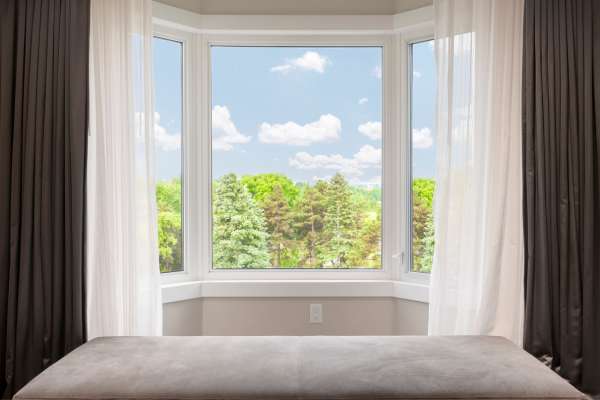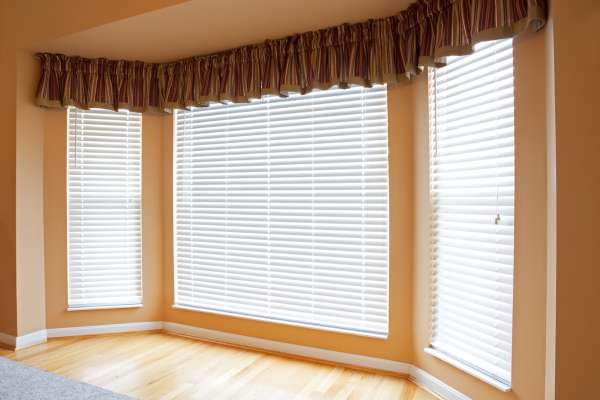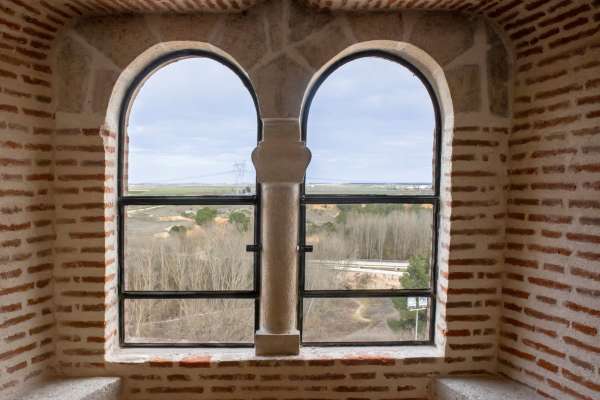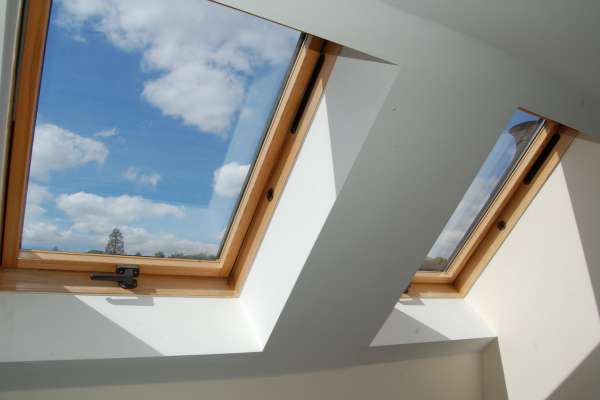In the realm of interior design, crafting an optimal window design for the bedroom is a nuanced art that seamlessly merges functionality with aesthetics. Beyond mere portals for natural light, bedroom windows serve as pivotal elements shaping the ambiance and functionality of the space. This professional exploration delves into the strategic considerations, stylistic nuances, and technological advancements that converge in creating a window design that not only enhances the visual appeal of the bedroom but also optimizes its practical utility. From the delicate balance of maximizing natural light exposure while ensuring privacy to the integration of cutting-edge smart window solutions, this discourse navigates the intricacies of a well-crafted window design that transforms the bedroom into a harmonious haven of comfort and style.
Window Types
1. Casement Windows:

Casement windows are hinged at the side and open outward, providing excellent ventilation and unobstructed views. Known for their contemporary aesthetic, they offer a tight seal when closed, enhancing energy efficiency.
2. Double-Hung Windows:

Timeless and versatile, double-hung windows consist of two vertically sliding sashes. This design allows for controlled ventilation through both the upper and lower sashes, while their classic look seamlessly integrates with various architectural styles.
3. Bay Windows:

Bay windows extend outward from the exterior wall, creating a nook or alcove within the room. Their multi-panel configuration invites ample natural light, expanding interior space, and offering an elegant focal point that enhances both interior and exterior aesthetics.
4. Bow Windows:

Similar to bay windows, bow windows form a gentle curve, adding a touch of sophistication. Comprising multiple panels, they create a panoramic view, infusing the room with natural light and providing an opportunity for charming window seat installations.
5. Skylights:

Skylights are installed in the roof to introduce natural light from above. Perfect for spaces with limited wall space or to create a sense of openness, skylights bring an element of drama and an abundance of daylight while maintaining privacy.
Functional Considerations
Optimal Placement for Natural Light:
Maximizing Daylight Exposure – Strategically positioning windows to harness the full potential of natural light is essential. This not only enhances the visual appeal of the room but also contributes to a healthier and more energizing living environment.
Ensuring Privacy with Thoughtful Placement – While embracing daylight, it is crucial to balance it with privacy concerns. Thoughtful placement of windows, using techniques like frosted glass or well-positioned coverings, ensures a harmonious blend of openness and seclusion.
Ventilation and Airflow:
Incorporating Functional Windows for Proper Ventilation – Functional windows, such as casement or double-hung varieties, facilitate effective ventilation. Their design allows for controlled airflow, promoting a fresh and comfortable indoor atmosphere.
Balancing Airflow and Temperature Control – Beyond mere ventilation, windows also play a role in regulating temperature. Strategic placement and selection of window types contribute to maintaining an optimal balance, preventing excessive heat gain or loss and fostering a climate-controlled living space. These considerations collectively define a well-thought-out approach to window placement, ensuring a synthesis of natural light, privacy, and efficient ventilation in the architectural canvas of a home.
Aesthetic Elements
Style and Design Choices:
Modern Window Designs – Embracing contemporary elegance, modern window designs incorporate sleek lines and innovative materials, imparting a chic and sophisticated allure to the bedroom.
Classic and Timeless Options – Conversely, the enduring charm of classic window designs, characterized by traditional frames and detailing, brings a timeless aesthetic that complements various interior styles.
Integration with Bedroom Decor:
Harmonizing Window Design with Overall Aesthetic – Seamless integration of window design with the broader bedroom decor is paramount. Ensuring a cohesive visual language, where the windows harmonize with furniture, color schemes, and textures, fosters a sense of balance and unity.
Customization for Personalized Touch – Recognizing the importance of individual taste, customization options allow for a personalized touch. From window treatments to unique framing details, these bespoke elements contribute to a bedroom’s character, reflecting the dweller’s unique style. By navigating the delicate interplay of modernity and tradition, and customizing design elements, window aesthetics become an integral facet of bedroom design, transforming the space into a visually enchanting and personalized sanctuary.
Safety and Security
Ensuring the safety and security of a home extends to the meticulous selection of window features.
Impact-Resistant Materials:
Employing impact-resistant materials in window construction serves as a foundational element in fortifying a home against potential hazards. These materials not only provide durability against external forces but also contribute to the overall resilience of the structure, enhancing safety for occupants.
Secure Locking Mechanisms for Enhanced Safety:
In tandem with robust materials, secure locking mechanisms stand as a paramount consideration. These mechanisms, designed with advanced technology and precision, bolster the window’s resistance to unauthorized access. By prioritizing impact resistance and implementing sophisticated locking systems, windows become a stalwart component in fortifying the home environment, ensuring a sense of security and peace of mind for its inhabitants.
Why is window design important for a bedroom?
Window design plays a crucial role in the bedroom as it affects both the aesthetics and functionality of the space. Properly designed windows can enhance natural light, ventilation, and views while also contributing to the overall ambiance and style of the room.
What are some popular window styles for bedrooms?
Popular window styles for bedrooms include:
- Casement Windows: These windows open outward on hinges and provide excellent ventilation and unobstructed views when open.
- Double-Hung Windows: These windows consist of two sashes that slide vertically within the frame, allowing for adjustable ventilation and easy cleaning.
- Bay or Bow Windows: These windows protrude outward from the wall, creating additional space within the room and offering panoramic views and ample natural light.
- Picture Windows: Picture windows are large, fixed-pane windows designed to maximize views and natural light without sacrificing energy efficiency.
- Sliding Windows: Sliding windows operate horizontally on tracks and are ideal for bedrooms with limited space, providing easy operation and good ventilation.
How can I enhance privacy in my bedroom without sacrificing natural light?
There are several ways to enhance privacy in your bedroom while still allowing natural light to enter:
- Frosted or Textured Glass: Opt for windows with frosted or textured glass that diffuses light while maintaining privacy.
- Window Treatments: Install blinds, shades, or curtains that can be adjusted to control the amount of light and privacy desired.
- Transom Windows: Consider adding transom windows above eye level to bring in additional light without compromising privacy.
- Privacy Film: Apply privacy film to existing windows to obscure the view from outside while still allowing light to filter through.
How can I maximize natural light in my bedroom through window design?
To maximize natural light in your bedroom, consider the following:
- Optimize Window Placement: Place windows strategically to capture the most sunlight throughout the day.
- Choose Larger Windows: Select larger windows or add additional windows to increase the amount of natural light entering the room.
- Minimize Obstructions: Keep window treatments minimal and avoid bulky furniture or decor that may block sunlight from entering the room.
- Reflective Surfaces: Use light-colored paint, mirrors, or reflective surfaces to bounce natural light around the room and amplify its effect.
How can I ensure energy efficiency with my bedroom window design?
To ensure energy efficiency with your bedroom window design, consider the following:
- High-Quality Materials: Invest in windows made from energy-efficient materials such as double or triple-pane glass with low-emissivity coatings and insulated frames.
- Proper Installation: Ensure windows are properly installed and sealed to prevent air leaks and heat loss.
- Window Treatments: Use insulating window treatments such as cellular shades or heavy curtains to reduce heat transfer and improve insulation.
- Consider Energy Ratings: Look for windows with high energy performance ratings, such as ENERGY STAR certification, to ensure optimal energy efficiency.
Consolation
The significance of bedroom window design cannot be overstated. It goes beyond the mere framing of views; it is an art that harmonizes functionality, aesthetics, and efficiency. From the strategic placement for optimal natural light to the careful selection of styles that seamlessly integrate with the overall decor, every detail contributes to the creation of a personalized sanctuary. The synthesis of impact-resistant materials, secure locking mechanisms, and energy-efficient features further underscores the commitment to safety and sustainability. In conclusion, a well-designed bedroom window is not just a portal to the outside world; it is a transformative element that elevates the living experience, offering a balance of comfort, style, and functionality.
